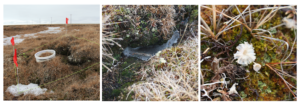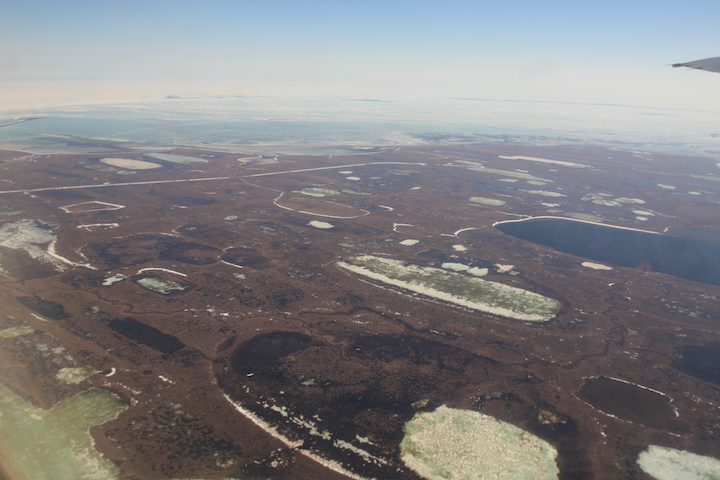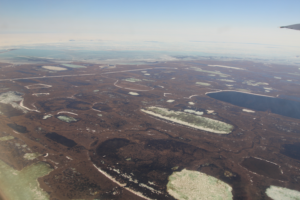As the Arctic continues to warm at about twice the rate of the rest of the world, scientists expect its frozen soils—known as permafrost—to thaw, activating microbes capable of decomposing soil and releasing carbons and other nutrients to the atmosphere and water. Berkeley Lab scientists in the Earth and Environmental Systems Area (EESA), led by microbial ecologist Neslihan Taş, set out to learn more about how Arctic soil microbes can contribute to greenhouse gas emissions under a warming climate.
Taş’s research team collaborated with Susannah Tringe, Deputy for User Programs at the Joint Genome Institute (JGI), to conduct their study, funded by the Department of Energy’s Office of Biological and Environmental Research (BER). The results were published in Nature Communications. JGI has previously partnered (details here and here) on microbial ecology studies in permafrost.
Focusing on the tundra terrain of the Barrow Environmental Observatory (BEO) in Alaska, the researchers collected and sequenced soil samples from different areas, delineated by polygonal shapes, and examined which microbial genes were found in each and what functions the soil microbes perform. They then compared this information to measurements of greenhouse gas emissions and geophysical and geochemical soil characteristics obtained from the polygons.

Chamber for soil greenhouse gas flux measurements (left); ice in polygon soils frozen in cracks (middle); close up to vegetation: moss and grasses (right)
The analysis showed drastic differences in microbial composition and function between wetter and drier polygons. Microbial functions such as fermentation and methanogenesis were dominant in wetter polygons. Whereas in dry parts of the landscape soil carbon mineralization and methane oxidation were important. Low nitrous oxide flux measurements obtained by the team indicated that in both wet and dry polygons, microbes were recycling nitrogen—which is depleted in most Arctic soils—for cell growth, rather than releasing it.
According to Taş, finding that microbiological processes are taking place is significant in and of itself. Evidence of microbial potential in permafrost soils can be used later on in larger simulations designed to predict what will happen under a warming climate over future decades, or even the next century.
Read more from EESA.





